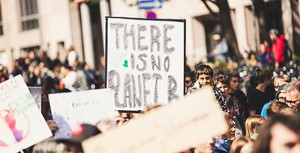- Clothes
- Bags
- Accessories
-
Inspiration
- Shoes
Fight Climate Change with Your Clothes: 6 Rebellious Choices
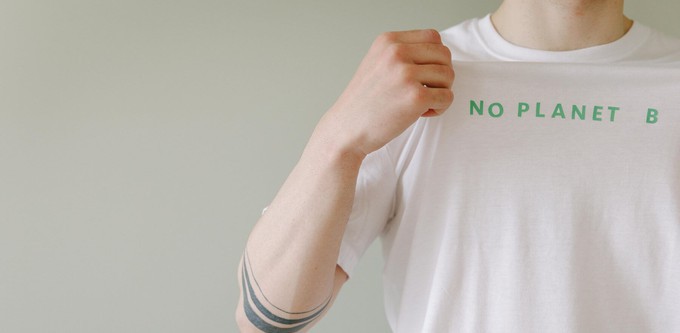
Are you an eco-conscious consumer trying to reduce your environmental footprint? First of all, good to have you here.
And secondly, I bet you’ve already received all kinds of advice on other areas of your lifestyle, like reducing your meat consumption or taking public transport. Of course, that’s just as important.
But something that isn’t talked about enough in conversations on climate change is… the impact of the very thing we use all day, every single day: clothing.
Now, don’t get me wrong: the biggest responsibility is—and should always be placed—on brands.
However, even as consumers, there’s so much we can do, and it’ll have a positive ripple effect in other ways too, including your fulfillment. Plus, in today’s fast and throwaway society, choosing to do something consciously is a rebellious act in itself.
So, here are my ideas to fight climate change with your wardrobe.
The connection between fashion and climate change
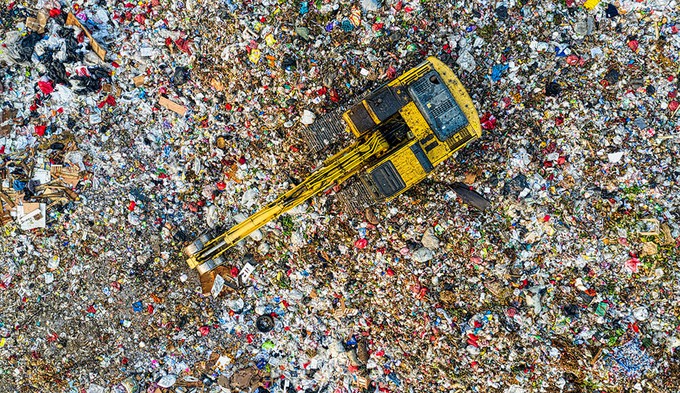
I’d need a separate article to cover everything (good thing we’ve already written about the impact of fashion on climate change), but in a nutshell:
- Carbon emissions – The fashion industry is responsible for 10% of all greenhouse gases generated from human activities. That’s more than aviation and shipping combined. It mostly happens during the initial material sourcing and production phase, particularly with synthetic fabrics like polyester
- Water usage and pollution – This happens at different stages of the supply chain. For example, wastewater full of toxic chemicals and dyes is often released into rivers. Cotton is also a big culprit: it requires 2,700 of water to make a single t-shirt and is full of pesticides and fertilisers. This causes all kinds of problems that have a direct impact on climate change, like desertification and soil degradation (for example, that soil releases more carbon into the atmosphere)
- Overconsumption and waste – Fast fashion has brainwashed us into seeing garments as throwaway items. So, we now produce 400% more clothes than twenty years ago but wear them less, not even 7 times on average. The result? 92 million tonnes of waste every year. And those clothes (especially synthetic ones) will continue to pollute the environment and release greenhouse gases even after they’re sent to landfills
As well as its environmental impact, fast fashion comes with a human cost (yes, sweatshops are still a thing), and it also affects your brain: it keeps you trapped in a vicious cycle (= always buying more clothes to get a dopamine hit) and makes you unhappy in the long run.
So, you won’t “just” be fighting climate change with your clothes: these simple shifts will make a huge difference overall.
6 rebellious and mindful ways to fight climate change with your clothes
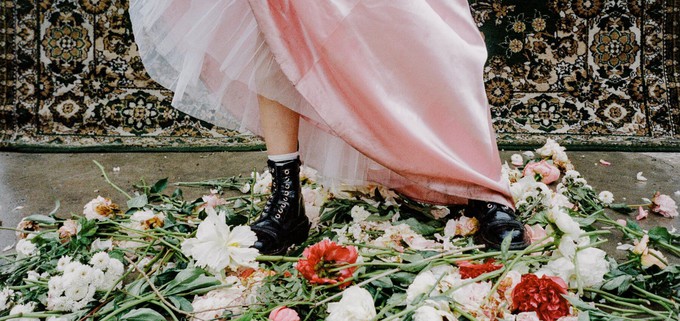
1. Flip the finger at fast fashion
Fast fashion brands are encouraging you to keep buying garments, discarding them, and buying some more without worrying about their environmental impact (or how and by whom they were made).
So, the most sustainable and rebellious act is… to fall in love with fewer clothes and take care of them for as long as possible (and I say this as someone who, before opening her eyes and eventually co-founding an ethical fashion platform, used to be obsessed with fast fashion).
Some tips to help you ditch fast fashion and that mindset:
- Whenever you’re about to make an impulse purchase, pause. For example, I used to tell myself “If I still want it in two weeks, THEN I’ll buy”. By then, I usually didn’t
- Remove distractions: unfollow brands and influencers promoting overconsumption, unsubscribe from similar newsletters, and delete shopping apps
2. Rewear your clothes as much as you can
The most sustainable clothes are the ones already in your wardrobe.
It takes a lot of resources to produce a new item of clothing. So, if it only gets used a couple of times and then discarded, it’s a massive waste (and that’s without considering the fact that most people will buy a new one—or more—straightaway).
Instead, keeping a garment for just 9 additional months will reduce its carbon, water, and waste footprint by 20-30%.
- Get creative by using your existing clothes to create new outfits (digital wardrobe apps can help you pair up items you hadn’t thought of before!)
- Embrace repeat outfits too, especially those that match your style, really feel “you”, and therefore make you happy whenever you rewear them
- If something goes wrong, fix your clothes instead of binning them
3. Watch your laundry
From energy to water use, our laundry also has a big environmental impact. Washing machines alone emit 62 million tonnes of greenhouse gases every year (think 62 million hot air balloons).
- Try washing your clothes less often, especially when they aren’t actually dirty (for example, store them tidily so they can breath, leave them to freshen up near an open window, or use natural fabric freshener)
- Choose lower-temperature washes
- Skip the tumble-dryer: let them dry naturally
4. Help clothes circulate longer, even when you part with them
Don’t bin them!
- Swap them with friends or locally (for example, I recently joined the Clothing Loop, and it feels so empowering to be connected with people who truly care)
- Sell them online
- Donate them to local shelters and organisations that are actually going to use them (unfortunately, most of our donated clothes end up as “waste” in developing countries)
- If that brand allows it, send them back so they can be resold or recycled
5. Know your fabrics
This is a more complex and nuanced topic, but to give you some direction:
- Try and avoid the worst fabrics for the environment – Cotton (yes, even though it’s natural) and synthetic ones like polyester
- Prioritise the most sustainable fabrics – Recycled materials, hemp, linen, organic cotton, and bamboo
6. Buy less but better
- Choose fewer, timeless garments that match your style (not temporary trends) – Do they go with the items already in your wardrobe? Can you see yourself wearing them at least 30 times?
- Support sustainable brands that make clothes ethically while minimising their environmental footprint – Unlike fast fashion items, these garments are also designed to last for years. Not sure where to find them? Right here on Project Cece! We brought hundreds of fair trade brands in one place and added filters to simplify your choices
As teased before, the biggest responsibility should be on brands, but we can fight climate change with our clothes too.
One (repeat) outfit at a time.
Share our story
Related articles
6 Human Activities Affecting the Environment: How Clothes Fit In
From cotton pesticides to polyester’s emissions, here’s how fashion contributes to all these human activities' impact on the environment (& what we can do)
Fast Fashion's Environmental Impact: Your Clothes' Real Cost
Low price tags, HIGH cost for the planet. Here’s a jargon-free overview of fast fashion’s environmental impact—and what YOU can do about it.
Fashion & Climate Change: What Planet Is Your Wardrobe On?
From high carbon emissions to unsustainable waste, the thread tying fashion and climate change is scarily strong, but here’s what you can do to help.
Project Cece is a platform that collects ethical fashion from vetted brands and shops in one place. Browse ethical fashion for women and men and find items that fit your style, budget and values!
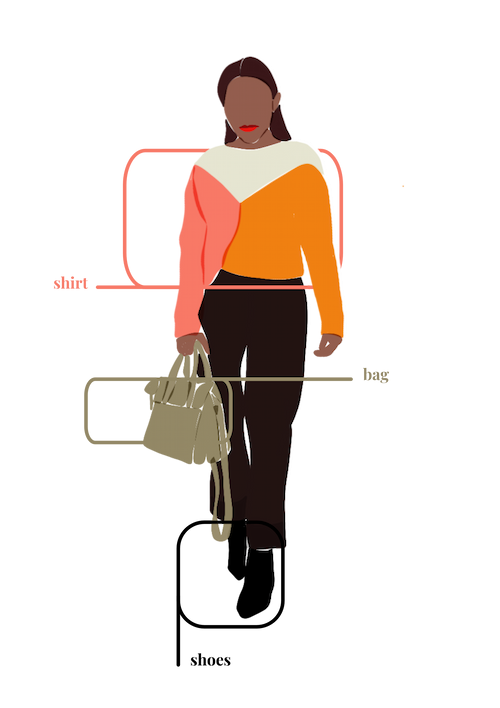
_large.png)


